The New Year 1944 Begins and the Navy Honours Its Own
From "They Get The Convoys Through" by PTE. Joe Bateman
The poem in its entirety is presented below
Introduction:
The Crow's Nest reached thousands of sailors and their families by subscription snd the Royal Mail. Letters to the editor on a monthly basis sang its praises, and some, as the example below reveals, offered heart-felt poems to their loved ones who were out at sea:
The Editor did accept the submission, and Mrs. Riddell's poem appears shortly...
Other submissions, along with cartoons, articles and photographs related to 'the arts (and crafts) of war' from January and February 1944, appear below:
Information about the plot of the picture "Corvette K225" can be found at Wikipedia.
At the time of creating this post, a part of the movie "Corvette K225" could be found in B & W at Daily Motion.
The stage production "Meet the Navy" was also making the rounds as the new year began:
A reader of "The Crow's Nest" submits a famous Russian poem and it is presented below"
The aforementioned poem written by Mrs. Riddell of Woodstock, ONT is presented below:
The movie "Corvette K-225" would certainly introduce the subject of convoys to the reader, and poems related to that subject are presented in "The Crow's Nest" as well:
While in Scotland in 2014, tramping over beaches south of Irvine (near Troon) that would have been very familiar to my father and other Canadians who had volunteered for Combined Operations, I also visited a Heritage Centre north of Irvine, at Saltcoats. The centre was home to many much history of the area, and I was able to browse through old newspapers (via microfilm) in search of materials related to WWII activities. Below is another poem in praise of convoys as found in The Irvine and Fullarton Times, published on September 11, 1942:
The next three photographs are related to my trip to the Saltcoats Heritage Centre:
The building is opposite my bus stop; entrance is open, on the left
One of several WWII posters on an interior wall
Ad from The Irvine and Fullarton Times. We see commandos like their OXO!
Look closely... a few Canadians in Combined Ops man the landing crafts!
The photo above was presented in January 1944 and may relate to an action at sea during the same month. Hard to tell without more digging for more details concerning HMCS Athabaskan.
However, it is known that in January 1944, scores of members of RCNVR and Combined Operations (veterans of the Dieppe Raid and invasions of North Africa, Sicily and Italy) continued their WWII service at Canada's only Combined Operations training camp or school. They served at HMCS Givenchy III (on The Spit, at Comox, B.C.) from Jan. 1944 to the summer of 1945. Some, including my father Doug Harrison of Norwich, ONT, were discharged from the Navy after they left Givenchy III and returned to HMCS Star, in Hamilton, September 5, 1945.
Below we see one such overseas veteran, Leading Seaman (later a PO) Chuck "Comox" Levett, in charge of a cutter at the spit, manned by what looks to me like U.S. troops. (Comox is but a hop, skip and a jump from U.S. territory and within easy reach of significant American West Coast navy bases).
Chuck "Comox" Levett (RCNVR, Combined Ops) trains US troops to get in
synch with the oars on a navy cutter. August 1944, The Spit, Comox BC
Photo Credit - Rob Levett (son of Chuck Levett), Campbell River BC
In Navy memoirs my father writes:
“I enjoyed giving the order to toss oars” at The Spit, Comox BC
Photo credit - Sailor Remember by W. H. Pugsley
I enjoyed giving the order to ‘toss oars’. With this the huge oars were brought from the water and as quickly as possible tossed up in the air, and of course the water came pouring down from the blades in a regular storm for a minute and everyone got soaked to the hide, including me, but on a hot day it was refreshing. I was longing for a swim anyway. There were several cutters with soldiers and with experience we began to have races. The competition was a good thing and a real esprit de corp developed within the teams. The races were close, the blisters were soon forgotten and the training became enjoyable as some fun was injected into it.
"Dad, Well Done" by G. Harrison, Page 126
The first letter of the poem should be an I, not an f
Quite a range of artfully crafted material is seen in The Crow's Nest, as can be seen in the last five entries from January's issue below:
1. A cartoon -
2. A dance team from "Meet the Navy" -
3. A poem w a distinct spiritual tone -
4. A story with a truthful circumstance and funny outcome -
Young men with "on watch duties", both members of RCNVR and Combined Operations, reveal similar circumstances and outcomes in the following tales:
Some nights I stood guard duty at the end of a long pier, as lookout for German raiding parties. In the lonely darkness of the night, this inexperienced 18 year old discovered the power of the imagination! It seemed that the end of the watch would never come.... I was gaining a sense of the terrible nature of modern warfare, as I realized in my imaginings how easily they could be turned into brutal and bloody reality.
My Naval Chronicles by Lloyd Evans, Page 9
Doug on guard duty at Northney with “a rifle with no ammunition”
We were issued brooms for guard duty in some cases at Northney, sometimes a rifle with no ammunition, and they were expecting a German invasion. Rounds were made every night outside by officers to see if we were alert and we would holler like Hell, “Who goes there? Advance and be recognized.” When you hollered loud enough you woke everyone in camp, so sentry duty was not so lonesome for a few minutes.
"Dad, Well Done", Naval memoirs of G. D. Harrison, Page 11
And now, a few items from the February issue:
"Artfully said," I say
More to follow from The Crow's Nest
Please link to From "The Crow's Nest" (5)
Unattributed Photos GH



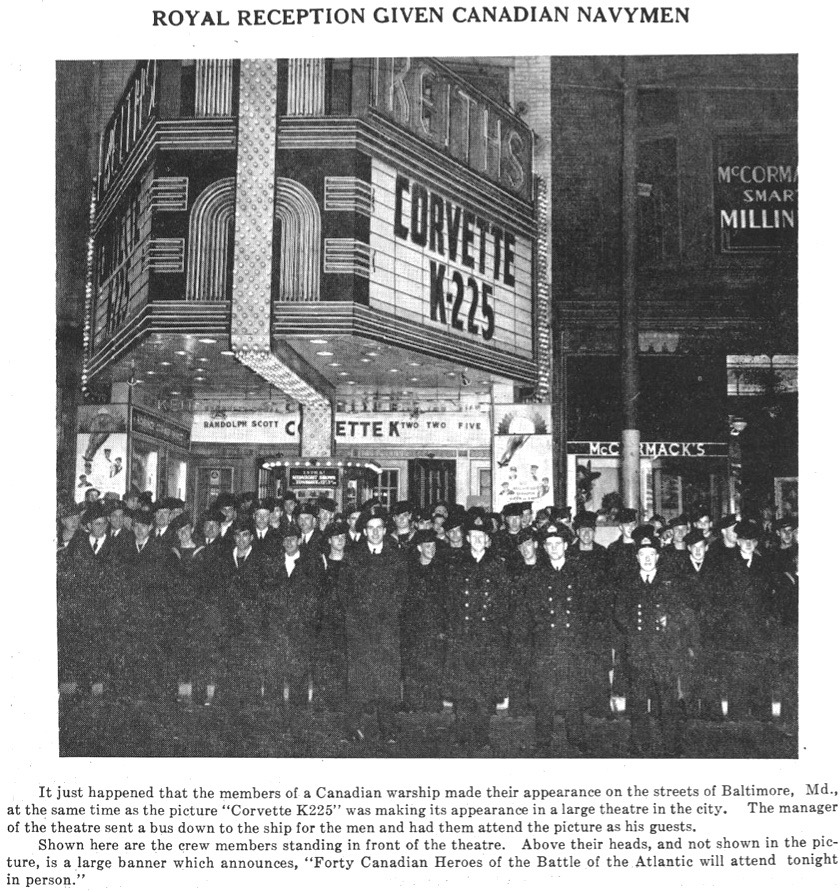


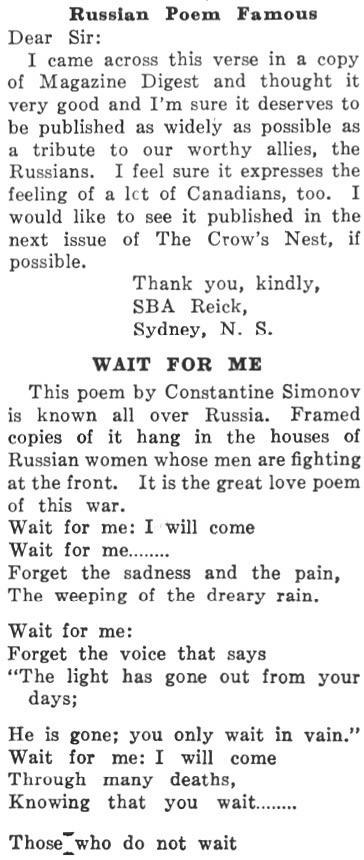







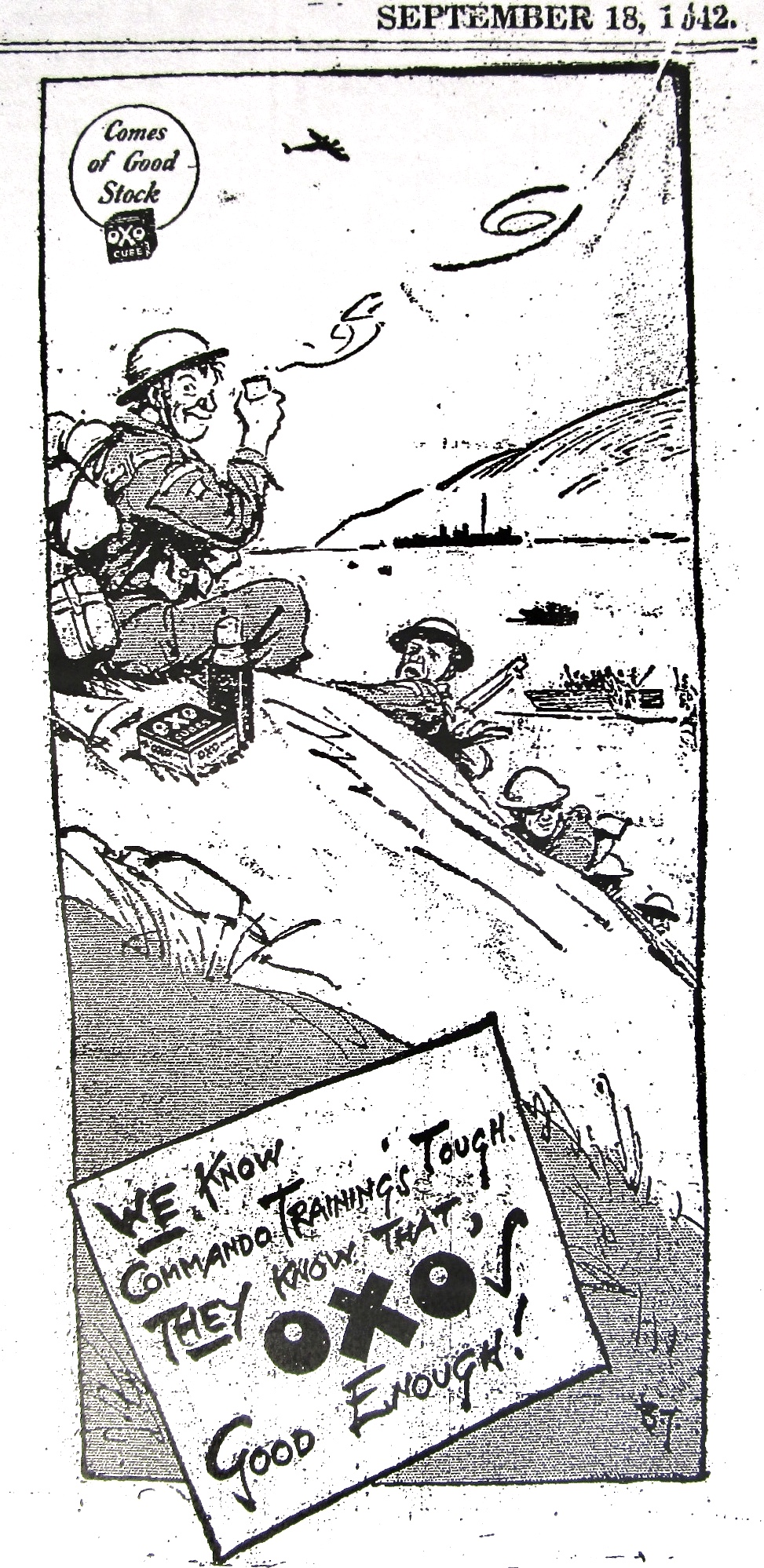
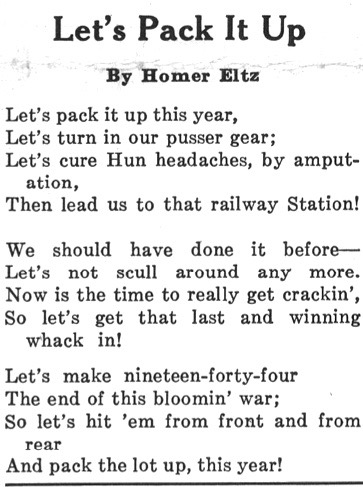
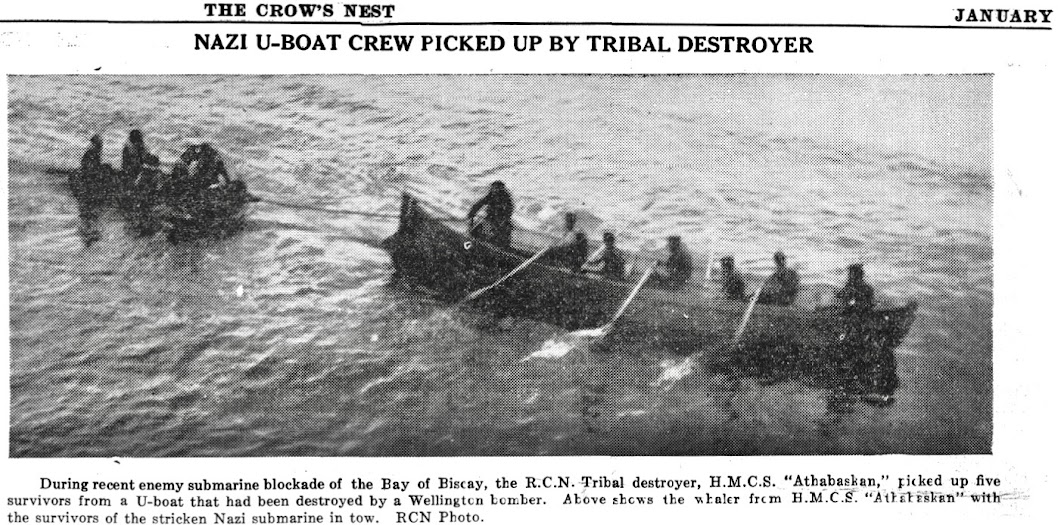











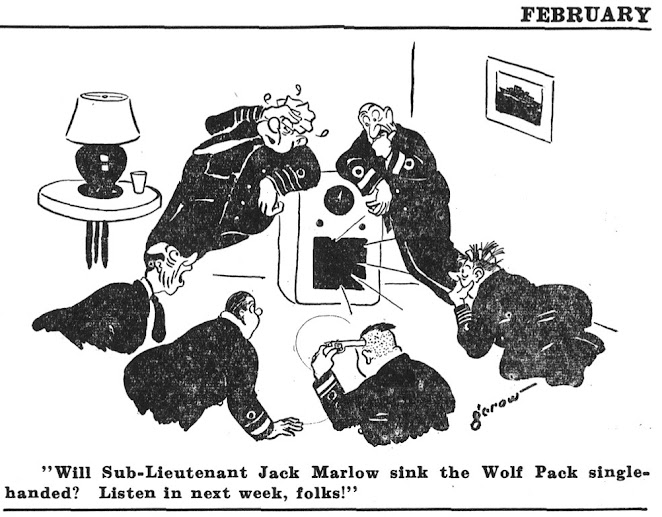







No comments:
Post a Comment